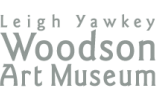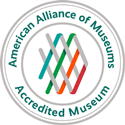
New York City embodies energy, experimentation, and forward thinking. It was the perfect location for Helen Bader Foundation-sponsored training on Alzheimer’s Disease and Museum Programming. The Woodson Art Museum is one of five Wisconsin museums to receive a planning grant from the Bader Foundation to develop programming for individuals with Alzheimer’s and their caregivers.
We – Jayna Hintz and Erin Narloch – traveled to NYC together. This is our diary.
Day ONE
The first day of training was held at the Museum of Modern Art, a must-see destination for anyone interested in modern art. We were there on a Tuesday, when MoMA is closed to the public – what a treat.
The first speaker, Dr. Meg Sewell, Ph.D., is an Assistant Clinical Professor of Psychiatry at Mount Sinai School of Medicine, the Director of Education for the Alzheimer’s Disease Research Center, and the Director of the Memory Enhancement Program. WOW. Dr. Sewell provided powerful and practical information on understanding patients with Alzheimer’s Disease.
Anne Bastings, Ph.D., spoke next. She is the Director of the Center on Age and Community at the University of Wisconsin-Milwaukee, and also an Associate Professor in the Department of Theatre and Dance at the Peck School of the Arts. Anne presented an overview of creative engagement programs for people with dementia. This was uplifting, as she highlighted the possibilities for creative programming.
The day continued with speakers from the worlds of medicine and art; a panel discussion comprising museum staff (representing MoMA, Metropolitan Museum of Art, and American Folk Art Museum) focusing on dementia programming at museums; a program planning session; and a mock experience in MoMA’s galleries.
After Day One, we felt like sponges filled to capacity. That evening after discussing our impressions of the day as well as the possibilities for programming at the Woodson, our sponges emptied a little, making room for Day Two learning.
Day TWO
We began at the American Folk Art Museum, an impressive mid-sized museum a stone’s throw from MoMA. Museum educator Jennifer Kalter discussed the Folk Art Museum’s program and answered our questions – a fruitful hour and a half.
The afternoon session took place at the Metropolitan Museum of Art, where we observed an art-making program for individuals with Alzheimer’s Disease and their caregivers. This experience put everything we learned about and discussed into action. Over forty participants filed into the room, sitting as dyads or groups as they prepared for the class to start.
Close to where we were sitting was a father in a wheelchair, surrounded by his two sons and his wife. Before the class began, they exchanged smiles with one another; one son kept saying, “Hey, Dad, smile!” – trying to get his attention to take his photograph. Even though the class hadn’t yet begun, John and his family were fulfilling the objective for museum-based programming for individuals with Alzheimer’s and their caregivers – they were engaged in a meaningful experience.
As the class started, the educator invited participants into the discussion. Projected on the wall was an image of an Alberto Giacometti artwork – a cat. Next was an Indian frieze of Krishna fighting a demon horse. When asked what they saw, one participant exclaimed, “Well, I can tell you the animal isn’t Kosher,” pointing to its hooves! The group erupted in laughter (during our previous day’s training we learned that individuals with Alzheimer’s tend to retain their sense of humor until the very end). The class concluded with participants making their own sculpture, each successful – it was great to witness.
Following the class, the educators mentioned that John’s sons thought it was their last visit as they would be putting their dad into hospice care. We were perplexed by the news, as this was the engaged family that we observed prior to the start of the program. While this family faced the hard decision to place their father in hospice care, they took time to come to the Metropolitan Museum of Art to participate in a program! They must see great value in this experience. What a powerful message for us.
The observation concluded our training. With this information and firsthand knowledge, we returned to the Woodson Art Museum with a mission: to create a program that engages individuals with Alzheimer’s and their caregivers in meaningful experiences at the Woodson Art Museum.
Stay tuned . . .




